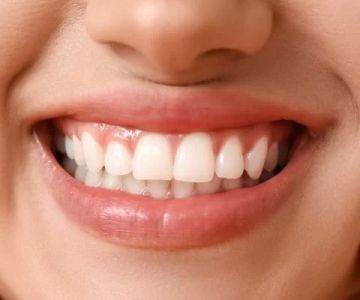
- 1-recognizing-signs-of-oral-bacterial-infection
- 2-common-symptoms-and-warning-signs
- 3-diagnosis-and-professional-assessment
- 4-treatment-options-for-oral-bacterial-infections
- 5-preventative-measures-and-ongoing-care
- 6-patient-stories-and-the-importance-of-early-intervention
1. Recognizing Signs of Oral Bacterial Infection
Oral bacterial infections can develop subtly but have serious consequences if untreated. Common signs include persistent bad breath, swollen or bleeding gums, pain when chewing, and visible sores or abscesses in the mouth. Recognizing these early symptoms is vital for timely intervention.
Bacterial overgrowth disrupts the natural balance in your mouth, leading to infections that may affect teeth, gums, and surrounding tissues.
2. Common Symptoms and Warning Signs
Beyond discomfort and swelling, other symptoms might include redness, tenderness, pus discharge, and changes in taste. In severe cases, fever and swollen lymph nodes may signal that the infection is spreading.
Awareness of these signs helps individuals seek dental evaluation promptly, minimizing complications.
3. Diagnosis and Professional Assessment
Dentists at Dentistry Toothtruth perform thorough examinations, often including X-rays, to determine infection extent and origin. Identifying the bacterial strains guides the treatment approach.
Timely diagnosis not only addresses the current infection but also aids in preventing recurrence by tailoring care plans.
4. Treatment Options for Oral Bacterial Infections
Treatment typically involves professional cleaning, antibiotics, and in some cases, surgical drainage or root canal therapy. The choice depends on infection severity and location. Adjunct therapies like antimicrobial mouth rinses support healing.
Dentistry Toothtruth emphasizes personalized treatment plans that consider patient history and overall oral health.
5. Preventative Measures and Ongoing Care
Maintaining oral hygiene through regular brushing, flossing, and dental visits is key to preventing bacterial infections. Lifestyle choices such as diet and smoking cessation also impact oral health.
Professional cleanings and patient education at Dentistry Toothtruth empower patients to sustain long-term oral wellness.
6. Patient Stories and the Importance of Early Intervention
One patient shared how early recognition of gum swelling led them to Dentistry Toothtruth, where swift treatment prevented tooth loss and chronic discomfort. Such stories highlight the crucial role of awareness and professional care in managing oral bacterial infections.
If you notice any signs of oral bacterial infection, consulting experts promptly can make a significant difference in outcomes.







 Cosmos Family Dental, PC4.0 (28 review)
Cosmos Family Dental, PC4.0 (28 review) White Smiles Family Dental4.0 (74 review)
White Smiles Family Dental4.0 (74 review) David A. Rice, DDS4.0 (186 review)
David A. Rice, DDS4.0 (186 review) Kevin B. Sands, DDS5.0 (168 review)
Kevin B. Sands, DDS5.0 (168 review) Dr. Ruaa Adham0.0 (0 review)
Dr. Ruaa Adham0.0 (0 review) Rich Orthodontics -Willow Grove3.0 (39 review)
Rich Orthodontics -Willow Grove3.0 (39 review) The Importance of Oral Health Education During Pregnancy for a Healthy Pregnancy
The Importance of Oral Health Education During Pregnancy for a Healthy Pregnancy Best Tips for Brushing Your Teeth Properly for Healthy Gums: Essential Techniques for Oral Health
Best Tips for Brushing Your Teeth Properly for Healthy Gums: Essential Techniques for Oral Health Why Skipping Dental Checkups Can Lead to Bigger Oral Health Problems
Why Skipping Dental Checkups Can Lead to Bigger Oral Health Problems Advantages of Porcelain Dental Restorations
Advantages of Porcelain Dental Restorations How Can Diabetes Cause Tooth and Gum Problems? Preventing and Managing Oral Health Issues
How Can Diabetes Cause Tooth and Gum Problems? Preventing and Managing Oral Health Issues Healthy Habits for Promoting Good Oral Health and Hygiene: Tips for a Healthy Smile
Healthy Habits for Promoting Good Oral Health and Hygiene: Tips for a Healthy Smile